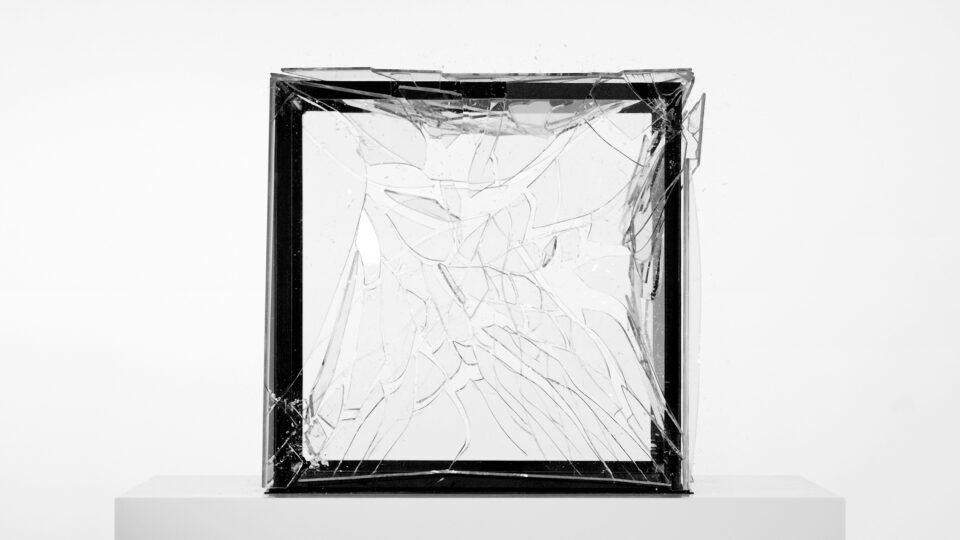0.
0. (pronounced zero point), suggests a small quantity between something and nothing but not yet a whole number, a fraction that defies the geometric perfection of the archetypal minimalist cube. Although Gaviria’s cube seems a quotation of the movement’s obsession with pristine, commercially manufactured, 3D geometric forms, the work occupies the spaces of neither painting nor sculpture. Following the logic of conceptual art but using the medium of video, the artist has dematerialized the object, which exists now as a projected moving image. The image itself, however, does not perceptibly move until the last few seconds of its four-minute duration and thus, asserts an ineluctable presence, an idealized proposition of eternality. Shot in HD high-speed digital video, the temporal dimension of the work is indeterminate and highly confounded: what appears to be a still image is, in fact, time stretched. At first, one sees only a 2D image of a glass box flattened on the screen. Then, suddenly, the glass walls begin to implode in slow motion as their hyaline shards are sucked in. These shards then explode outwards as the cube silently shatters and crashes to the ground, its former shape reduced to a pile of rubble and a black steel frame. This spectacular climax is unique in Gaviria’s work, which tends to flow consistently with subtle modulations and which is devoid of a distinct beginning or end. Historically akin to Gustav Metzger’s theories of autodestructive art (1959) and Jean Tinguely’s self-destructing sculpture “Homage to New York” (1960), this dramatic event subverts the logic of minimalism by – irony of ironies – pushing to unimagined heights the theatricality that so perturbed Fried. The idyllic, autonomous, minimalist object – and, by extension, the ideological and aesthetic values associated with it – have metaphorically imploded. At the same time, this destructive and deconstructive act recapitulates those ideals: Gaviria’s cube is perfect and commercially manufactured; the filming was similarly outsourced to a professional cinematographer; the engineering was aided by a physicist; and numerous experiments were conducted to choose the proper glass and regulate the vacuum pressure to achieve a consistent implosion from multiple walls of the cube. In other words, 0. is a highly aestheticized film object that was made possible only through an extraordinary degree of precision, resulting in a perfect, idealized implosion. Herein lies perhaps the most important component of the work’s Gestalt: the pairing of a critique of idealized form by its destruction with the presentation of an idealized form of destruction. It is in this interplay of conflicting significations that the work accrues added meaning.



